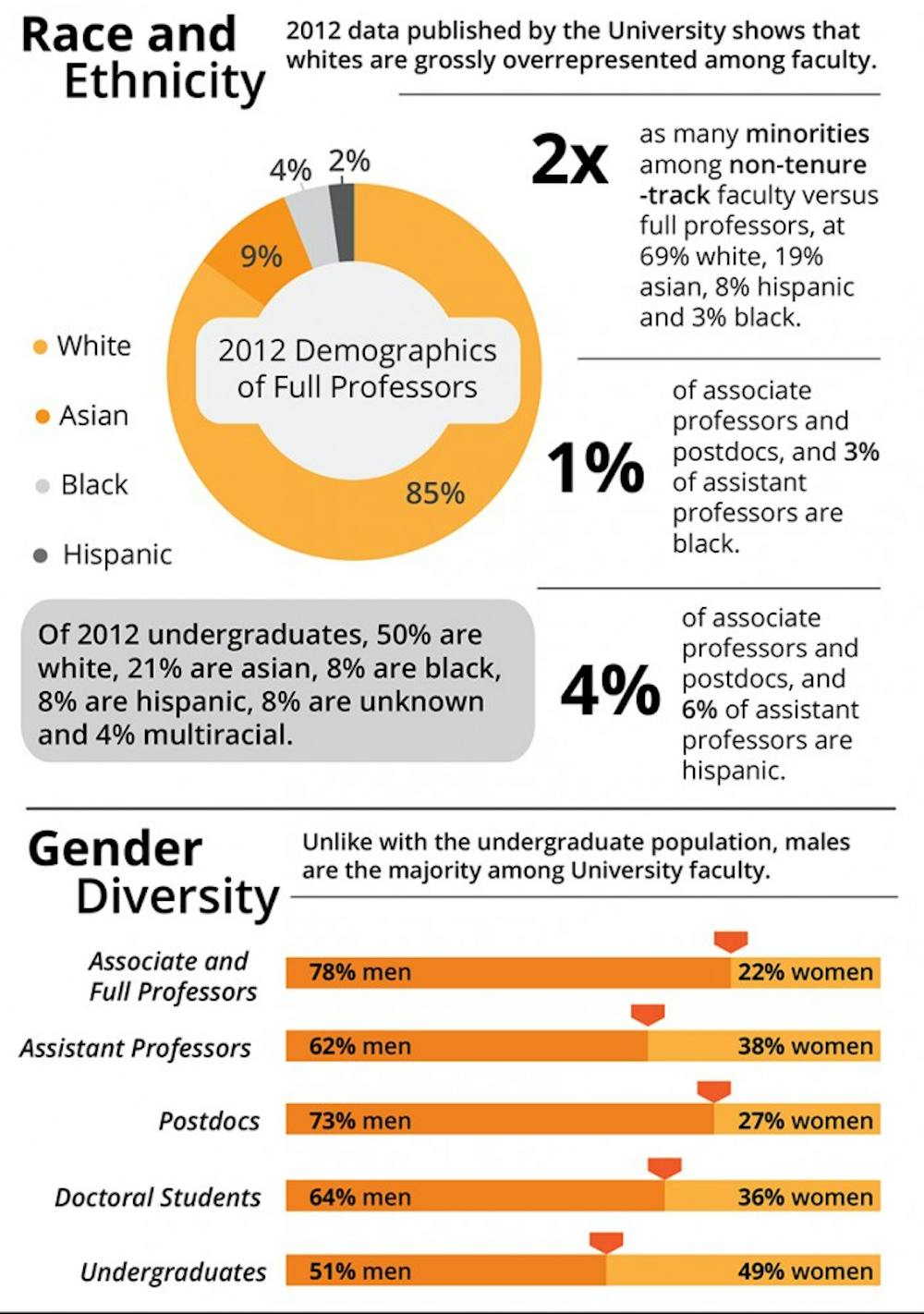Whites are overrepresented among the University’s graduate students, postdoctoral fellows, faculty and senior administrators, according to 2012 data published Thursday by the Trustee Ad Hoc Committee on Diversity formed in January of 2012.
The report states the committee found that progress in the University’s efforts to increase diversity since 1980 has been “uneven,” and, in the case of black and Hispanic populations, “disturbingly slow.”
Data also shows that men are greatly overrepresented among faculty and graduate student populations.
The report recommends that academic departments take steps to increase diversity.
“We analyzed a whole lot of data and basically found that the University’s progress on issues of diversity has been very uneven,” Deborah Prentice, co-chair of the Trustee Ad Hoc Committee on Diversity and a professor of psychology and public affairs, said. “What we learned in focus groups as well is that different groups of people feel more or less welcome on campus, they feel more or less able to attain certain positions. What that means is that we aren’t necessarily getting all of the talented people we could to reach their full potential, and that’s a cause for concern.”
Though the report acknowledges that the University has come a long way in the last 50 years in its attempts to increase diversity in the undergraduate student body – the undergraduate student population in 2012 was 50 percent white and about 51 percent male – the committee found that the diversity of faculty and senior staff was not as developed.
According to the report, more than 80 percent of faculty and senior staff are white.
Likewise, men outnumbered women in every population of the University in 2012 except for senior staff, where the divide was even. The largest gender disparities are in the makeup of the full professor and postdoc populations, in which men make up 80 percent of the former and 73 percent of the latter.
“Gender and race ethnicity, that’s the only information that the University collects systematically about people, but the spirit of the report is that we would like to support diversity of all kinds on campus, so I’m talking about religious diversity, physical abilities, sexual orientation and so on,” Prentice said. “We want everybody to feel that Princeton is their place.”
Among the report’s 29 recommendations is a call on all academic departments to craft multi-year strategic plans. The report states that it is “virtually impossible to make substantial institutional progress” unless individual departments lead the effort to increase diversity.
The committee also recommended funding diversity-related efforts such as inviting students from underrepresented groups for campus visits.
The report recommends that diversity-enhancing efforts emphasize the graduate student population as a means of creating a more representative future pool of academics. It recommends that departments take a holistic review of graduate school applicants, considering factors such as “research experience, creativity and persistence,” while placing less reliance on grades and standardized test scores.
The report notes that the University’s unitary undergraduate admissions process “lends itself to accomplishing the goal of creating a broadly diverse class.” It notes that this unified approach to admissions is lacking for the other University populations, acknowledging that “departmental leaders are the best judges of their priorities and needs.”
Because its data measures the demographics of every level of the University’s academic community, the report illuminates the way representation of certain groups declines as individuals move through the pipeline of academia. The representation of white Americans increases 75 percent throughout the progression of the pipeline, while the representation of Hispanics, African-Americans and Asian-Americans declines by roughly 50 to 65 percent.
“Really, what we wanted to do was to begin to create a resource base of ideas and practices for units to draw on as they think about how diversity can make them better and what they want to do to achieve that,” Prentice said. “It’s not that everybody is going to do all of those things, but it was really to create a menu of options.”
The committee was formed by former President Shirley Tilghman in January of 2012 and included 19 members of the University community, including trustees, faculty members, graduate students and staff. Prentice and University Trustee Brent Henry ’69 co-chaired the committee.
Henry did not immediately respond to a request for comment.
University President Christopher Eisgruber ’83 said he thought the University should take a multifaceted approach to enhancing diversity, with a focus on it as a long-term goal. He said he did not think there would be any one-size-fits-all solution and that long-term improvement would be realized through multiple different approaches aimed at helping the University reach the best talent in academic fields.Senior writer Regina Wang contributed reporting.








